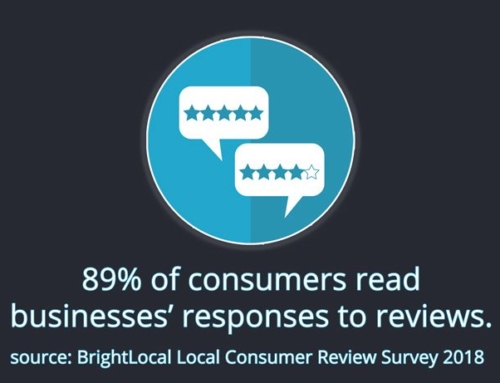
Getting positive media coverage for your business generates wide-reaching prospects with a lot of credibility. It’s no wonder that a lot of business owners want to get their businesses covered in the media positively, but they really don’t know how to go about it. Let’s explore how to generate more PR for your business that boosts your media coverage and enhances your company’s visibility in the market.
Set Specific Goals
What is your PR strategy? Start with the end goal in mind and determine which media outlets (radio, TV, printed publications and online outlets) match up with your business’s ideal customers and community stakeholders. Be specific. Not every person or business is an ideal customer and not every news publication is a good fit for your business. Developing a profile of your ideal clients and the publications they read is helpful to jumpstart your efforts.
Make a list of any industry-specific associations with magazines, newsletters or online news portals. Collect the contact person’s name, title, phone number and email. You may also want to include links to articles that are similar to ones that you’d like that same reporter to write about your organization. Conduct a similar effort for local news and national news. Think carefully about why your company’s news is truly newsworthy (timely, unique, relatable, impactful). Journalists are bombarded with article pitches, so your story needs to catch their attention. There are media list service companies and marketing agencies like ours that can pull this information for you. If you’re on a tight budget, you’ll need to conduct your own research.
Understand Your Target
From there, study the types of articles and news that these outlets and reporters typically cover. For instance, if a key publication is tied to an industry association, it’s more likely to be open to running news from its members. Is your business a member there? If not, put that on your priority list. However, if the publication is a more traditional business or news outlet, even if that is industry-specific, the publication likely has published guidelines on the types of stories that it covers or accepts from outside authors. Some publications will allow external experts to write articles and submit those for possible publication. That is a great way to boost your business’ visibility with targeted audiences and remain more in control of the message.
Still, many publications such as the Houston Chronicle and Fast Company (except to its Leadership section) do not typically accept bylined articles. Instead, businesses interested in being featured in these types of publications really need to focus on developing relationships with the reporters who have covered their industry or subject matter. Instant gratification is seldom won in this arena. It’s definitely a longer process but can be quite worthwhile.
Help Them Help You
Having experience in developing relationships with the media and securing media coverage helps, so you know which pitfalls to avoid and how really to nurture relationships with members of the media. Just pushing a press release out to a bunch of magazines seldom results in quality coverage. Many experts and PR professionals tend to cover a certain beat or industry, so they can over time more easily develop relationships with the media focused on those same interests. Providing timely and relevant information to reporters helps them produce their stories. Yes, press releases are still relevant, but regular, helpful correspondence with the journalists in your industry and backyard pave the way to credibility with the media and in turn your prospects.
Fire & Aim?
So, you have a great announcement to make. You whip up a press release and email it out to your media list. You may even opt to distribute the press release via the newswire services. After a few follow-up phone calls by your team, a few reporters show interest in an interview. Now you pitch the reporter over to your expert and rely on your leaders to share their insight and ink a great story, right?
“Before anything else, preparation is the key to success.” – Alexander Graham Bell
Not so fast. Before your leaders tackle speaking with outside reporters in the pursuit of PR and media hits, they really should go through a media training session. This helps them understand how well relationships with reporters really can work and how to get your organization’s key messages delivered. There are techniques (not tricks) to use so that your message is presented clearly. There are ways to share examples that back up your statements to ground them in truth and help the reporters substantiate their stories. These skills are cultivated first in media training and then through ongoing experience with the media.
In fact, some PR practitioners will not handle a company’s PR, if the spokespeople have not completed this type of training. This is definitely something that executives can plan for in December or January, so they are best positioned to hit the New Year running.
Deliver a Consistent Message
Another consideration: Which key messages are your spokespeople using? A key messaging session, which is often coupled with your media training, is also very helpful when you have a new announcement and when more than one spokesperson is going to be talking to reporters. Of course, you want your entire team sharing the information in the same way. Have you ever heard more than one person explain the same idea, but each version sounds completely different? Consistency is critical with the media. (Check out our two-day seminar focused on helping leaders develop succinct, key messages about new initiatives and then learn how to use those key messages with reporters to secure positive coverage.)
One of the worst things a business can do is put this off until the leadership has more time. It’s an easy thing to delay. However, if a strong media presence is a priority for your business, then the leadership should make the time.  There’s always enough time for your top priorities.
There’s always enough time for your top priorities.
Consider the leads and business opportunities that you are not even seeing, that aren’t even coming to the surface because you aren’t engaging in true public relations.
For business owners wanting to grow their business, PR is a great way to share positive news about your company. People want to do business with those who are successful and who are having a positive impact on their community — period. That in and of itself should make PR a priority.










